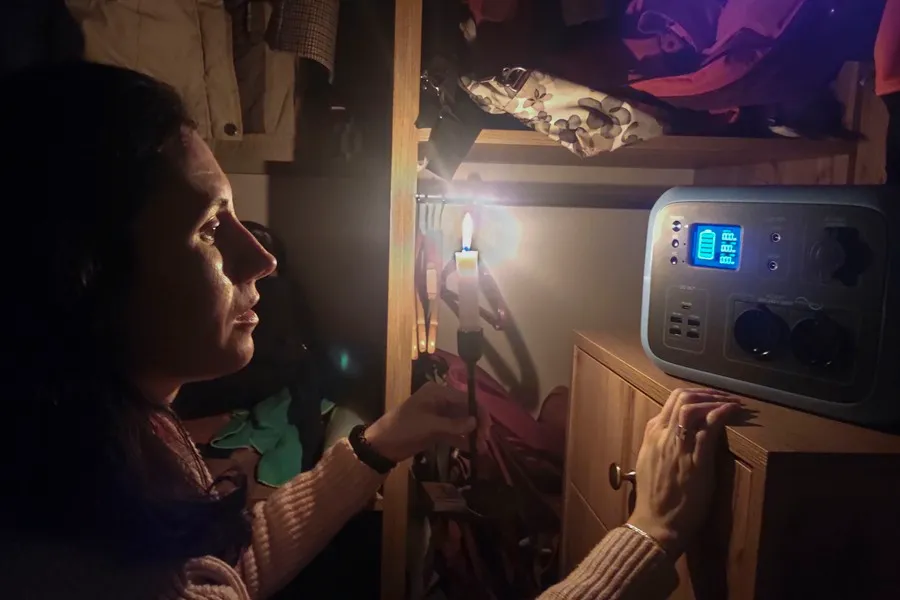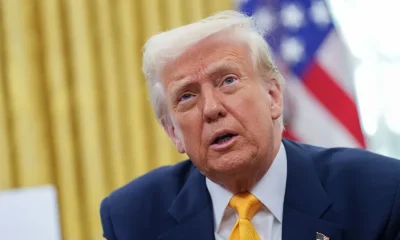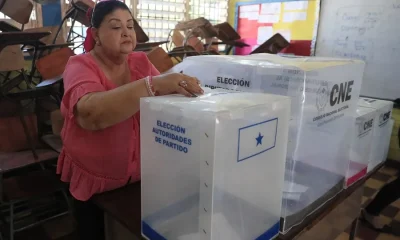International
Ukraine is committed to cogeneration and private production to face the winter

Less than two years after a first campaign of Russian attacks on the electricity system deprived millions of Ukrainians of constant energy supply for months, Ukraine has become accustomed to blackouts again this summer and is working in a hurry to avoid a second winter in the dark by boosting cogeneration and encouraging private production.
In addition to repairing the damaged infrastructures as soon as possible, and trusting that the new air defenses received will serve to protect them from possible additional attacks, the Ukrainian authorities are installing hundreds of cogeneration plants throughout the country to decentralize production and involve gas companies in the task.
“They are parallel processes,” Yuri Boiko, advisor to the Prime Minister of Ukraine, Denís Shmigal, and member of the Supervisory Board of the national electricity company, Ukrenergo, tells EFE.
Boiko points out that, if it receives a sufficient boost, cogeneration will mitigate the effects of the electricity deficit on the population: “The more cogeneration is installed, the less charge the central energy system will have.”
The prime minister’s adviser warns, however, that the impact on the situation will depend on the number of cogeneration units that will be enabled in the coming months.
Part of these already functioning mini-power plants have been donated by Ukraine’s foreign partners.
The United States cooperation agency has delivered 91 cogeneration plants that will be installed in 32 cities throughout Ukraine and will provide a production capacity of 56.5 megawatts that will allow part of its critical infrastructures to operate.
The first 18 were installed at the beginning of this month and already generate electricity and thermal energy for Ukraine.
Unlike thermal power plants, which in Ukraine have been massively bombed by Russia to destroy 80% of the generation capacity by this method that the country had, cogeneration plants take advantage of the heat that is released when it comes to producing electricity and supply it to other infrastructures.
The cogeneration units that Ukraine is installing are of a relatively small size and can be moved relatively easily.
This allows them to be mounted next to buildings that can provide heating with the thermal energy they produce when generating electricity.
While conventional power plants are very difficult to defend from bombing, due to their large dimensions and the impossibility of changing their place, cogeneration units can be distributed throughout the territory, reducing the risk of concentrated blows to the generation capacity.
“In Ukraine, a few power plants and a dozen substations are still responsible for half of the electricity generation and transmission. Obviously, five or ten centrals are easy targets for the enemy. When we have hundreds of small power plants, it will be almost impossible to attack them with missiles,” said the head of the Parliament’s Energy Committee, Andrí Gerus, in a recent interview.
As revealed by President Volodymyr Zelensky during the conference for the reconstruction of Ukraine held in June in Berlin, where the Ukrainian electricity sector obtained numerous commitments of Western public and private aid, Kiev aspires to install 1 gigawatt of electricity production capacity by cogeneration this year.
In its eight massive attacks this year against Ukrainian power plants, Russia has destroyed about 9 gigawatts of the generation capacity that Ukraine had.
The Ukrainian gas and oil company Ukrainafta announced this month an ambitious project valued at one billion dollars to install, within three years, more than gigawatts of electricity production capacity through cogeneration from natural gas.
The company also develops wind and solar energy projects to contribute to the recovery of part of the electricity sector.
Another vector to produce more energy and relieve the burden on the power plants and substations that are being repaired is the promotion of own generation between companies, institutions and individuals.
On June 20, Zelenski ordered the authorities to install solar panels, accumulators and smart meters in all schools and hospitals.
The Ukrainian Parliament approved new tax exemptions for the purchase and imports of generators, batteries and solar panels with the idea of promoting the installation of their own generation capacities among citizens and reducing their dependence on a centralized system that remains in the crosshairs of Russian commanders.
The Ministry of Energy of Ukraine announced earlier this month the arrival in the country of about six thousand solar panels manufactured by the Italian company Enel and paid for by the European Commission that will serve to guarantee the uninterrupted supply of electricity to hospitals in five regions of the country.
International
Meta Says Russia Seeks to Ban WhatsApp for Defending Secure Communication

U.S. tech giant Meta, the parent company of WhatsApp, said that Russia is seeking to ban the messaging app because it “challenges government attempts to violate people’s right to secure communication.”
Russian authorities have encouraged citizens to switch to state-backed applications, and in August they already blocked WhatsApp’s calling feature.
On Friday, the communications regulator Roskomnadzor claimed that the platform was being used to “organize and carry out terrorist acts in the country, recruit perpetrators, and facilitate fraud and other crimes.”
“If the messaging service does not comply with Russian law, it will be completely blocked,” the regulator warned.
WhatsApp remains one of Russia’s most widely used messaging services, alongside Telegram.
Moscow is pressuring both platforms to grant authorities access to user data upon request for investigations into fraud and activities the government labels as “terrorist.”
Human rights advocates fear the demand could be used to target critics of the Kremlin, President Vladimir Putin, or the war in Ukraine.
International
Archbishop Wenski criticizes Trump’s deportation policies, calls for stronger push for reform

The Archbishop of Miami, Thomas Wenski, has called for increased pressure on the U.S. Congress to advance comprehensive immigration reform and criticized President Donald Trump’s mass deportation policies, arguing that they “do nothing to help.”
“We need to apply more pressure on Congress so lawmakers can make the necessary changes. It is also important for the Administration to listen to our voice. We do not want to be anyone’s enemy—we are Americans,” Wenski said in an interview with EFE.
The religious leader, who heads one of the dioceses with the largest Latino and Haitian populations in the United States, issued a call to defend the rights of migrants. He also emphasized that the U.S. Conference of Catholic Bishops (USCCB) has maintained a strong and public stance in favor of migrants for decades.
International
Trump relaunches diplomatic push to finalize U.S.-Backed peace plan for Ukraine War

U.S. President Donald Trump announced on Tuesday that his diplomatic team will resume meetings with delegations from Russia and Ukraine in an effort to pressure both sides to accept the peace plan proposed by Washington to end the war in Ukraine.
As part of this new round of talks, U.S. Special Envoy Steve Witkoff will travel to Moscow to meet with Russian President Vladimir Putin. Meanwhile, Army Secretary Dan Driscoll will hold discussions with Ukrainian representatives to narrow differences on the remaining points of the agreement.
Trump also confirmed his intention to meet personally with Ukrainian President Volodymyr Zelensky and with Putin, though he emphasized that such meetings will only take place “when the agreement is fully finalized or in its final stage.”
The president claimed that his administration has made “tremendous progress” toward resolving the conflict and reiterated that the war “never would have started” if he had been in the White House at the onset of the crisis.
The U.S.-backed peace plan consists of 28 points and has been revised following feedback from both sides. According to Trump, only “a few points of disagreement” remain under active discussion.
One of the most controversial aspects of the proposal is the suggestion that Ukraine cede parts of the Donbas region to Russia and limit the size of its armed forces. Kyiv is working closely with Washington to soften these clauses in search of an arrangement that does not compromise its sovereignty or security.
With this diplomatic push, Trump aims to solidify his role as the main mediator in the conflict and steer the war toward a political resolution after years of devastation, humanitarian crisis, and rising global geopolitical tensions.
-

 International4 days ago
International4 days agoTrump relaunches diplomatic push to finalize U.S.-Backed peace plan for Ukraine War
-

 International4 days ago
International4 days agoBolsonaro misses appeal deadline, faces imminent prison order by Brazil’s Supreme Court
-

 International4 days ago
International4 days agoMan pleads not guilty in Liverpool parade incident that injured more than 130
-

 Central America3 days ago
Central America3 days agoPanama reinforces security with new helicopters and Super Tucano Aircraft purchases
-

 International4 days ago
International4 days agoMacron to announce new voluntary military service amid rising security concerns in Europe
-

 Central America3 days ago
Central America3 days agoTrump urges hondurans to back conservative candidate Nasry Asfura in november elections
-

 International3 days ago
International3 days agoArchbishop Wenski criticizes Trump’s deportation policies, calls for stronger push for reform
-

 Central America23 hours ago
Central America23 hours agoTrump Pardons Former Honduran President Hernández and Warns of Aid Cuts Ahead of Election
-

 Central America3 days ago
Central America3 days agoWashington calls for oversight as Honduras faces allegations of electoral interference
-

 International23 hours ago
International23 hours agoMeta Says Russia Seeks to Ban WhatsApp for Defending Secure Communication






























